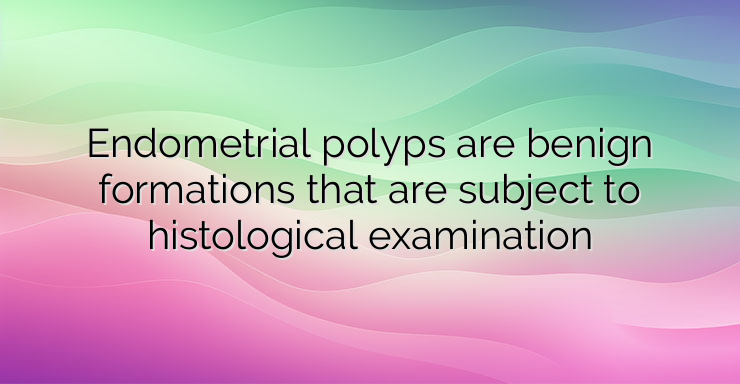Endometrial polyps are benign formations that are growths of the endometrium – the inner layer of the uterine wall. They can be located on a broad base and on the leg and are found both among women of reproductive age and among those in the postmenopausal period. In some cases, they are asymptomatic, and in others, they manifest with abnormal uterine bleeding. Histologically, an endometrial polyp is composed of endometrial glands, stroma, and blood vessels, with or without endometrial hyperplasia. Most often, endometrial polyps are found among women between the ages of 40 and 49. They can be single or in groups, and their sizes vary from a few millimeters to polyps occupying the entire uterine cavity. Endometrial polyps are most often located in the area of the uterine fundus. Endometrial polyps can be located on the leg, the so-called pedunculate polyps, or broad-based. In shape, polyps can be spherical or cylindrical, and their color is usually red-brown. Although they are common, a very small proportion of them, 10-15%, have malignant potential and can progress to endometrial carcinoma. Risk factors for the development of endometrial polyps are exogenous and endogenous estrogen stimulation. Taking Tamoxifen, a drug used to treat estrogen-dependent breast cancer, increases the risk of developing endometrial polyps. Examination of these polyps showed that they differed from the endometrial polyps of women not taking Tamoxifen in that they had increased expression of the inhibitors of apoptosis (programmed cell death) Bcl-2 and Ki-67. Other risk factors for the appearance of endometrial polyps are hormone replacement therapy in postmenopausal women and obesity. Being overweight is a risk factor because it increases the endogenous production of estrogens. This is explained by increased levels of aromatase, an enzyme that converts androgens into estrogens. The causes of endometrial polyps are not fully understood. It is believed that endogenously and/or exogenously increased levels of estrogens are important – in the glandular cells of the polyps, receptors for estrogens and less progesterone receptors are predominantly found. Increased expression of anti-apoptotic factors – Bcl-2 and Ki-67 – was found in endometrial polyps. Chromosome abnormalities can also be important for the development of endometrial polyps. An interesting theory about the formation of endometrial polyps is based on chronic inflammation of the endometrium. In such inflammation, mast cells produce cytokines and stretch factors that stimulate blood vessel formation and tissue growth. A significantly higher concentration of activated mast cells was found in endometrial polyps than in normal endometrium. In a large percentage of cases, endometrial polyps are asymptomatic, but they can still present with abnormal, heavy bleeding outside of the menstrual period.It is characteristic of endometrial polyps that they also create problems with pregnancy, as they represent a mechanical obstacle to the implantation of the fertilized egg. The diagnosis is made on the basis of the gynecological history, the gynecological status and with the help of transvaginal ultrasonography and sonohysterography. During sonohysterography, a physiological solution is introduced into the uterine cavity for better visualization of the endometrium. Treatment of endometrial polyps depends on their size and the problems they cause. Polyps under 10 mm in size, which are asymptomatic, not amenable to treatment, are periodically observed, and spontaneous regression in their development is possible. Polyps that cause problems for patients are subject to treatment and histological examination. Treatment of endometrial polyps can be hysteroscopic or by dilation and curettage. Hysteroscopy is the gold standard in the treatment of endometrial polyps. The procedure is performed under general anesthesia, during which a hysteroscope is introduced into the uterine cavity, through which polyps are inspected and removed.


Leave a Reply